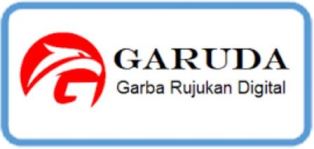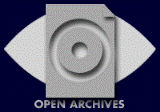RANCANG BANGUN APLIKASI MULTIMEDIA INTERAKTIF MOBILE LEARNING
 ), Asrul Huda(2), Nurindah Dwiyani(3),
), Asrul Huda(2), Nurindah Dwiyani(3), (1)
(2) Universitas Negeri Padang
(3) Universitas Negeri Padang
 Corresponding Author
Corresponding Author
DOI : https://doi.org/10.24036/voteteknika.v6i2.101986
Full Text:
 Language : id
Language : id
Abstract
The 2013 Curriculum is a curriculum that applies a single tool learning pattern to multimedia tool based learning. This has been regulated in Permendikbud No. 70/2013. The lack of interactive multimedia applications on Basic Network subjects resulted in the ineffectiveness of the application of the 2013 curriculum at the Vocational School level, majors in TKJ and RPL. With the presence of an Android smartphone in the middle of the community, it is able to present various useful content in the world of education. One of them is the use of mobile learning applications. Interactive multimedia applications can be developed into mobile learning applications. The purpose of this Final Project is to produce an application as a learning tool for basic networks on Android-based smartphones that have material content that is tailored to the 2013 curriculum. This application was developed through the Prototyping development approach with an Android-based Java programming language using the Integrated Development Environment (IDE) Android Studio. Making this final assignment produces Basic Network learning applications as a means to learn Basic Networks that have syllabus, lesson plan, material and video features that are adjusted to the 2013 curriculum. With the results of basic network learning applications this application is expected to contribute and facilitate the learning process basic network.
Keywords: Android, Basic Networks, Curriculum 2013, Interactive, Learning, Mobile, Multimedia, Smartphone
References
Republik Indonesia. 2013. Peraturan Menteri dan Kebudayaan RI Nomor 70, Tahun 2013 tentang Kerangka Dasar dan Struktur Kurikulum Sekolah Menengah Kejuruan/Madrasah Aliyah Kejuruan. Sekretariat Kabinet RI. Jakarta.
Reddi, Usha V & Sanjaya Mishra. 2015. Educational Multimedia A Handbook for Teacher-Developers. New Delhi: Commonwealth Educational Media Centre for Asia 52.
Dale's Cone of Experience. 1969. http://www.queensu.ca/teachingandlearni ng /modules/active/documents/Dales_Cone_ of_Experience_summary.pdf. Di akses pada tanggal 17 April 2017.
IDC. 2017. Smartphone OS-Market Share. 2017 Q1. http://www.idc.com/promo/ smartphone-market-share/os. Di akses pada tanggal 28 Agustus 2017.
Yayang Fitria Chandra. 2016. “Perancangan Aplikasi Mobile Learning Test Of English For International Communication (Toeic) Simulation Pada Smartphone Berbasis Android”. Jurnal Vokasional Teknik Elektronika & Informatika vol.4 no.2. Hlm 26―37.
Hulme, Agnes Kukulska dkk. 2005. Mobile Learning. London: Routledge.
Rosa A.S & M. Shalahuddin. 2015. Rekayasa Perangkat Lunak. Bandung: Informatika
Griffiths, Stephen. 2015. Mobile App UX Principles. Google
Izzan Muhamad Urfan. 2016. “Rancang Bangun Aplikasi Mobile Learning Bahasa Minangkabau Pada Smartphone Berbasis Android”. Jurnal Vokasional Teknik Elektronika & Informatika vol.4 no.2=1. Hlm 64―69.
Munir. 2012. Multimedia Konsep & Aplikasi dalam Pendidikan. Bandung: Alfabeta
Lee, Wiliam W & Diana L Owens. 2004. Multimedia-Based Instructional Design. San Francisco: Pfeiffer.
Wulyaningsih. 2017. “Model Pembelajaran Tugas Terstruktur Untuk Meningkatkan Motivasi dan Prestasi Belajar”. Jurnal Riset dan Konseptual vol. 2, no.1. Hlm. 51 ―57.
 Article Metrics
Article Metrics
 Abstract Views : 1834 times
Abstract Views : 1834 times
 PDF (Bahasa Indonesia) Downloaded : 779 times
PDF (Bahasa Indonesia) Downloaded : 779 times
Refbacks
- There are currently no refbacks.



.png)







